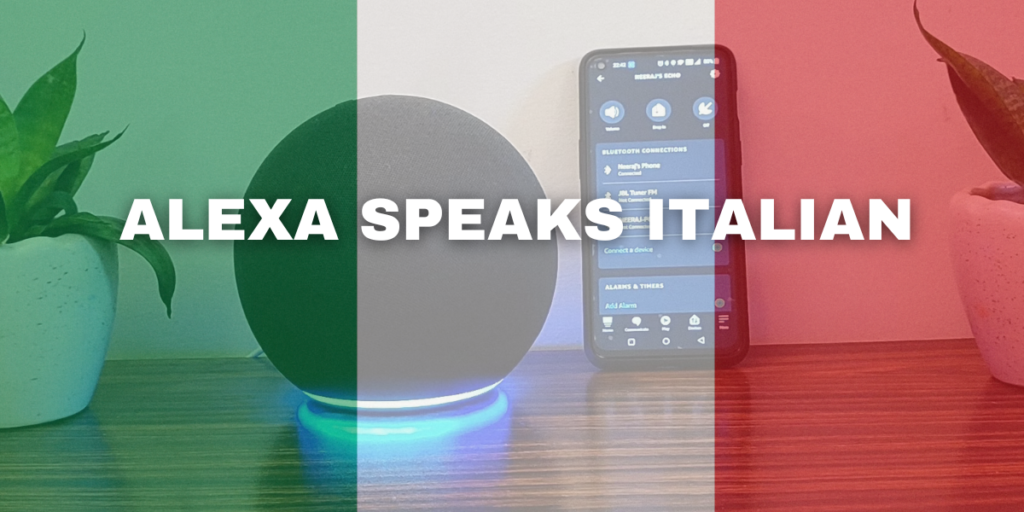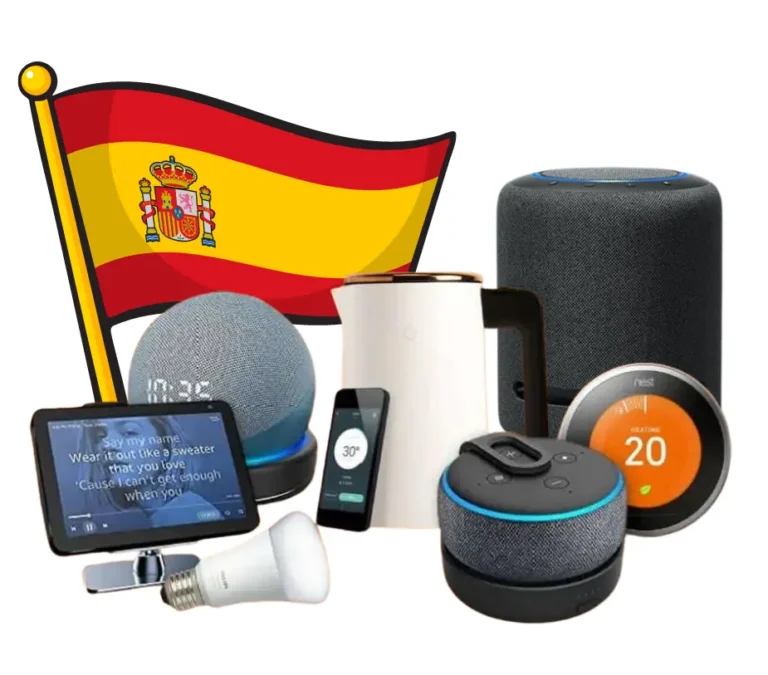Alexa is your go-to smart home devices’ controlling software via voice commands. But…
How to make Alexa speak Italian and also function over fluent Italian voice commands?

Let’s dig in deep to figure out possible solutions for getting Amazon Alexa speak Italian.
- Setting Up Alexa & Connecting With Smart Home Devices
- Does Alexa Speak Italian?
- Change Alexa Language Settings to Italian
- User Guide to Make Alexa Speak Italian (perfetta) with Screenshots
- Possible Limitations when you Change Alexa Language Settings to Speak Italian?
- Change Alexa’s Language With Voice Commands
- Can Alexa Play Italian Music and Radio Stations?
- Conclusion
Setting Up Alexa & Connecting With Smart Home Devices
Before customizing, so Alexa speak Italian language, one of the best things about Alexa is that it is very easy to use.
To get started, simply plug in your Alexa device and connect it to the internet. Then, download the Alexa app and create an account. Once you have created an account, you can start adding smart home devices to your Alexa account.
Alexa supports a wide variety of smart home devices, including lights, thermostats, locks, and more. To add a widget to your Alexa account, simply search for the device in the Alexa app. Once you have found the device, follow the on-screen instructions to add it to your account.
Does Alexa Speak Italian?
Amazon Alexa comes with a built-in feature to speak and function with Italian voice commands. Although Alexa supports only two Italian language dialects which are installed as the built-in language of Amazon Alexa i.e. Italian/U.S. and Italian/U.K.
Change Alexa Language Settings to Italian
To start with changing Alexa’s language setting into any Italian dialect. First, Go To Settings – Select Alexa Device – Go To Languages – Select Italian.
With a rich culture, the people of Italy also speak 34 different languages and dialects. To cover all of them is seemingly not possible for Amazon Alexa, that’s why the most commonly spoken dialects are selected.
Now Alexa Supports standard seven most commonly spoken languages including English, French, German, Hindi, Italian, Japanese, Brazilian Portuguese, and Spanish. Check out this guide about how to change Alexa to speak and take commands in Spanish
Si hablas español, echa un vistazo a nuestra guía sobre cómo hacer que Alexa hable español.

User Guide to Make Alexa Speak Italian (perfetta) with Screenshots
Note: The inability to access some of Amazon Alexa’s services and content in the U.S. could be one of the cons of switching the Alexa language to Italian on your device. Users might also need to frequently update their Alexa App or device for the latest dialect software version updates available.
Follow the steps one by one to change the Alexa language setting and preferences so that Alexa Speak Italian dialect.
- Open the Alexa app on your device.
- Tap on the Devices tab.
- Select your device from the list.
- Tap on the Settings gear icon in the top right corner.
- Scroll down and select Language.
- Select Italiano or a preferred Italian dialect (Italy).
Go to Devices and select Echo & Alexa device option:
Select your Echo device from the active device list:
Choose your active echo device.
Under Device Settings, Go to Language
Select Italiano as the preferred language.
Possible Limitations when you Change Alexa Language Settings to Speak Italian?
It’s important to remember that Alexa’s support for Italian may vary depending on the generation of your device and your location. Some features, such as capabilities, music, skills, and content, may not be fully available due to Alexa’s compatibility with your chosen language.
Change Alexa’s Language With Voice Commands
Simply just ask Alexa to change from the current language to Italian. Use voice commands like
“Alexa speak Italian, Now .”
You can enable multi-lingual mode on Alexa as it allows you to actively switch between two languages spontaneously – might help if you are trying to learn or converse in a new language. Suitable voice commands be:
“Alexa, speak in English and Italian.”
To stop Alexa from speaking in two or more languages at the same time just say
“Alexa, stop speaking {language}.”
Can Alexa Play Italian Music and Radio Stations?
You can ask Alexa to play different entertainment in Italian like radio or songs:
- Open the Alexa app on your device.
- Tap on the Skills & Games tab.
- Scroll down and select Music and Audio.
- You can either scroll through the list of tuners available for Alexa or simply type “radio” in the search bar to find a tuner quickly.
- Once you’ve found a tuner that you want to use, tap on it to install it.
- Once the tuner is installed, you can start listening to the radio by commanding “Alexa, play [station name]”.
Use the audio command:
“Alexa, play {radio station’s name} radio station”
Make sure to have an online connection to listen to radio stations via Alexa as Alexa itself lacks an FM tuner.
Conclusion
As you can see, Alexa is a multilingual AI assistant that can help you learn Italian in a fun and interactive way. With Alexa, you can practice your Italian pronunciation, learn new vocabulary, and even have conversations with native speakers. Here is one of the best and highly recommended Italian language course that work using Alexa with audio lectures.
So what are you waiting for? Start learning Italian with Alexa today!
Here are some of the ways you can use to Alexa speak Italian, take commands, and converse in Italian:
- Practice your pronunciation: Alexa can help you practice your Italian pronunciation by playing back recordings of yourself speaking. This is a great way to identify and correct any errors in your pronunciation.
- Learn new vocabulary: Alexa can help you learn new Italian vocabulary by providing definitions and example sentences. You can also ask Alexa to quiz you on your vocabulary knowledge.
- Have conversations with native speakers: Alexa can connect you with native Italian speakers who are willing to chat with you in Italian. This is a great way to practice your conversation skills and get feedback on your progress.
Check out our practical guide here, if you want to know how to change alexa to speak spanish


One Comment